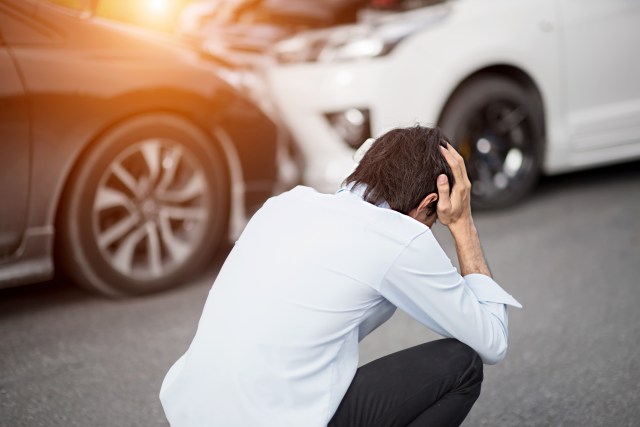It’s a nightmare scenario.
A fictitious consumer we’ll call John purchased a new car about a year ago, say, for $22,757 – the Kelley Blue Book Fair Purchase Price of one small sedan in a suburb of a major Southwest city.
“What is GAP coverage?” is a question he didn’t ask when he bought his vehicle.
So, in this example, he didn’t purchase GAP coverage – guaranteed asset protection – often referred to as “gap insurance,” even though it was offered at the dealership and by his insurer. And, then, it happens: The car is declared a total loss after an accident, a natural disaster, vandalism or theft.

John’s auto insurance company says the value of the year-old vehicle is about $13,000 because of depreciation. Unfortunately, despite a 10 percent down payment, he still owes the lender almost $17,000 on the vehicle, which, in this example, means there’s about a $4,000 gap.
(John still would be “upside down” if the car was a total loss after two years, owing about $2,500 more than it’s worth. Only at three years, in this example, does his regular insurance nearly cover the loss.)
That’s where GAP, or gap, coverage comes into play.
It could possibly make up the difference between John’s ordinary collision insurance and the amount owed if the vehicle is totaled*, when he still must continue to make regular on-time payments for a vehicle that no longer can be driven and that he will need to replace.
Here are some of the reasons that GAP coverage may be appropriate for a consumer to consider, according to Edmunds.com and bankrate.com:
- The consumer financed a vehicle and made little or no down payment, which means he/she will be way upside down the moment the vehicle is driven off the dealership lot.
- This consumer takes out a car loan with a long term, meaning 60 months or more.
- The owner trades in an upside-down car and adds the amount still owed to a new car loan.
- The car depreciates faster than average and doesn’t have great resale value.
- The consumer expects to pile the miles on quickly, more than 15,000 annually.
Making a larger down payment – say 20 percent – could have a dramatic effect on the gap.
In our example scenario, John would owe about $15,000 on the vehicle worth $13,000 after the first year – a gap now of about $2,000. After two years, the gap would be about $1,000 with breakeven point early in the third year of ownership.
Ultimately, whether John purchases GAP coverage has a lot to do with his risk tolerance and how much he could afford to pay out of pocket to cover a gap if the vehicle is a total loss.
Car buyers should be careful not to go over the edge and fall into a financial gap.
* GAP coverage may not pay off the difference between the customer primary insurance settlement and the account balance at time of total loss. Refer to your contract and/or contact your insurance provider.
These statements are informational suggestions only and should not be construed as legal, accounting or professional advice, nor are they intended as a substitute for legal or professional guidance.
Santander Consumer USA is not a credit counseling service and makes no representations about the responsible use of or restoration of consumer credit.


